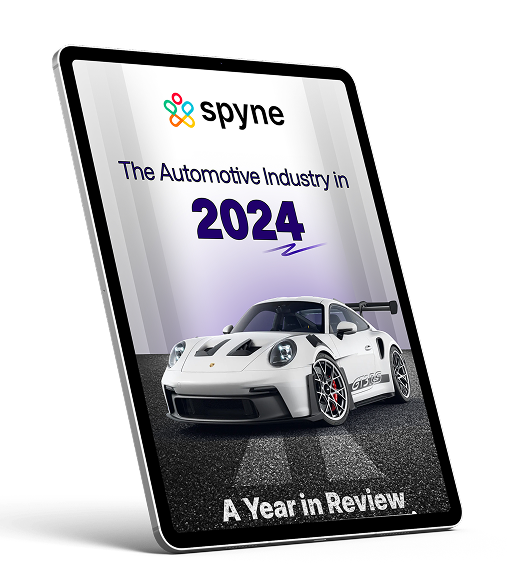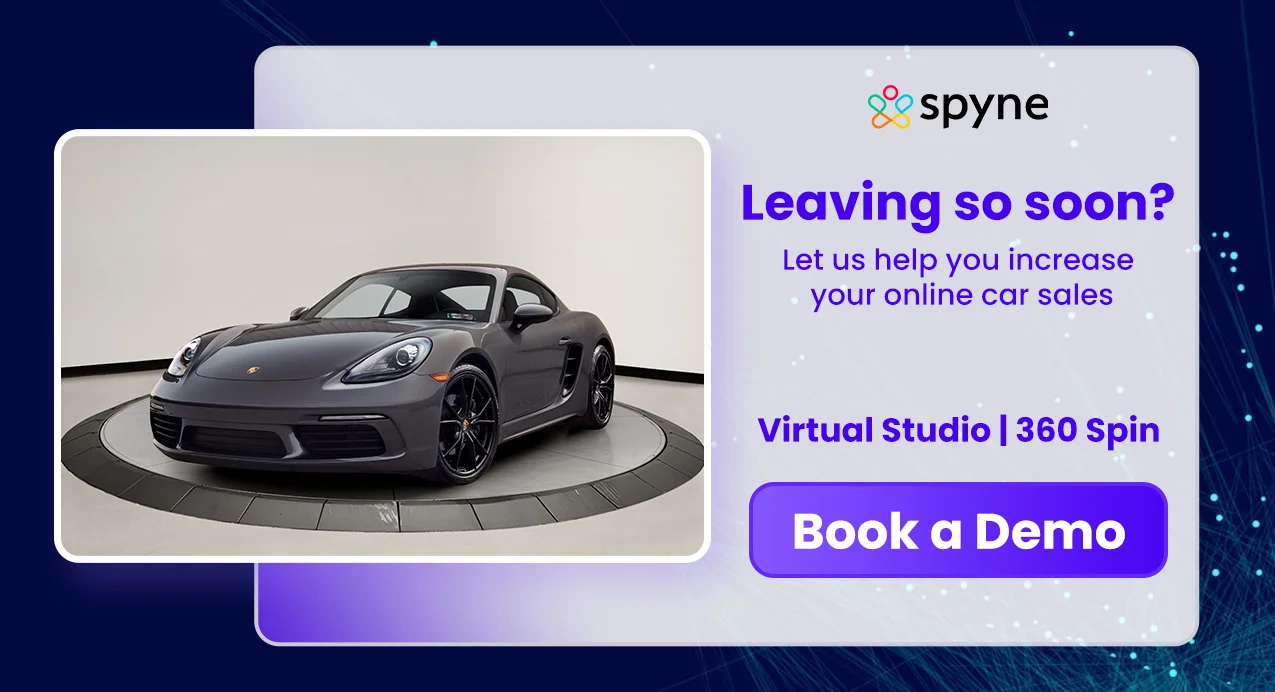Advertising today is what makes it possible for car dealerships to sell cars and establish long-lasting relationships with their customers. As more individuals purchase cars online, dealerships have to adapt their automotive advertising campaigns to get noticed. Advertising an auto is not solely about displaying cars. It’s about capturing a narrative that speaks to the buyer and makes them envision how a car exists within their lives. The right advertising tools can make all the difference in turning interest into actual sales. In this blog, we’ll discuss why automotive advertising is so important, the challenges the industry faces, and how Spyne’s AI-powered solutions are helping car dealerships create smarter and more effective ads that deliver real results.
What is Automotive Advertising?
Automotive advertising is how car dealerships advertise their cars to sell cars faster. It’s about communicating with individuals considering purchasing a used vehicle and explaining why a certain car is best for them.
Cars are unlike other products; they are a significant investment, and one doesn’t purchase them daily. Thus, auto advertising must reach beyond listing attributes. It must have a story that resonates with the consumer to create a sense of driving that vehicle and how it will incorporate into their life.
Whether on television commercials, social media advertisements, or online videos, the purpose is to attract attention, generate interest, and stimulate sales. The more competitive the marketplace, the more car dealership advertising must be innovative, recall-friendly, and emotionally appealing to prospective consumers.
Top 5 Reasons to Invest in Automotive Advertising in 2025
Automobile advertising is important in driving awareness among customers, sales, and brand loyalty. Reaching the right audience with the right message helps car brands stay competitive and relevant in a fast-paced market.
1. Create Brand Awareness
Automotive advertising ensures that potential buyers are aware of a brand or dealership when they’re ready to purchase. It helps car brands stay top-of-mind, even when people aren’t actively looking for a new car.
2. Drive Sales
Advertising is a direct driver of car sales. By targeting the right audience with the right message, automotive dealership advertising influences buying decisions, turning prospects into customers.
3. Stand Out in a Competitive Market
With many car brands and dealerships competing for attention, effective automotive advertising helps a brand stand out. It highlights a car’s unique features, benefits, and value, making it more appealing to consumers.
4. Build Trust and Loyalty
Automotive ads aren’t just about the sale; they build trust. By showcasing customer satisfaction, quality, and reliability, advertising helps create long-term relationships with buyers.
5. Adapt to Consumer Needs
Car dealership advertising allows car brands to communicate the latest models, features, and promotions, ensuring they stay relevant to changing consumer preferences and trends in the market.
The Automotive Marketing Funnel
The automotive marketing funnel is a buyer’s path, from initial exposure to a car through purchase, and sometimes even further. Car brands need to know this funnel, particularly now that the way car shoppers behave has shifted. With increasingly more buyers shopping online, the funnel has grown beyond a single visit to a showroom and now encompasses various digital touchpoints.
1. Top of Funnel: Awareness
At the top of the funnel, prospects are only beginning to become aware of a brand or vehicle. This is where car dealership ads truly make their impact. It’s about getting attention with automotive digital marketing ads, social media content, or search engine listings. With most customers preferring to research online before visiting a dealership, this stage is crucial for getting your car brand in front of the right people. The goal is to spark curiosity and make a lasting first impression.
2. Middle of Funnel: Consideration
Once they know about a brand or model, they enter the consideration stage. It’s when they start comparing things, reading reviews, and learning more about the car’s features. Messaging at this stage needs to be personalized according to their interests and requirements. The automotive marketers should be more focused on delivering descriptive information, whether in vehicle description pages, web videos, or interactive commercials, that brings them closer to a buying decision.
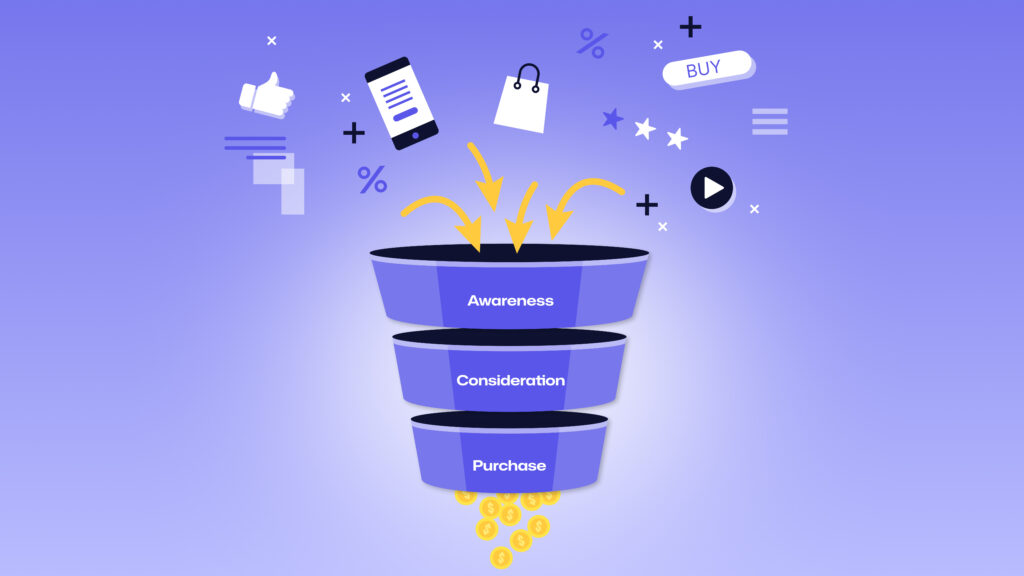
3. Bottom of Funnel: Purchase
The last phase is when the buyer is willing to close. After weighing all their choices, they make their decision and buy the car. In this phase, the aim is to close the sale, either through an e-commerce sale or by facilitating the customer to a dealer. It is important to have clear, easy-to-follow paths for conversion, either a call-to-action for a test drive or the ability to buy online.
Beyond the Funnel: Post-Purchase Engagement
Even after buying a car, the ride isn’t over yet. Brands can keep interacting with customers through second-order emails, loyalty schemes, or customer satisfaction surveys. Creating trust at every step of the funnel results in repeat customers and long-term relationships.
The Current Landscape of Automotive Advertising
Auto dealer advertising has evolved significantly over the past few years. Previously, the majority of individuals would go to a dealership to view cars and make a purchase. Nowadays, most consumers spend a great deal of time researching cars on the internet before ever setting foot in a dealership showroom.
Due to this, automobile companies must concentrate on online advertising such as social media, websites, and internet ads. Customers tend to choose a car after viewing it on the internet, so car brands should ensure that their ads are being displayed where they are needed.
But it isn’t always easy to find the right people. New privacy and data protection regulations make it more difficult to gather information on people who might become customers. What this means is that it is more difficult to know what people want and how to find them.
Despite these obstacles, traditional advertising means, such as TV or radio commercials, are still effective. But now they are most effective when complementing online activities. To thrive, automobile brands must utilize both online and traditional advertising in a mix that will engage consumers and move cars off the lots.
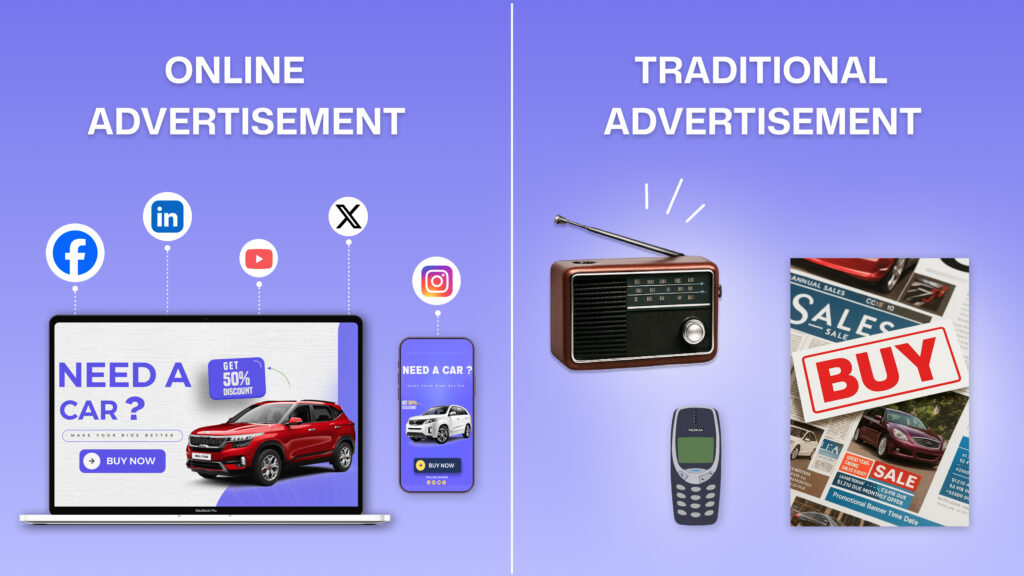
Main Challenges in the Automotive Industry
The automotive industry is evolving rapidly, and with that, new challenges are emerging for car dealerships. Here are eight important challenges they are currently facing:
1. Supply Chain Challenges
There is a global shortage of chips that has made it difficult to produce enough cars. Even if the customers are ready, the stocks aren’t. This compels brands to reduce diversity and concentrate on high-margin models.
2. Transition to Electric Vehicles (EVs)
Everybody’s going electric, but it is not simple. EVs cost more to manufacture and tend to generate less revenue. Battery metals are also more difficult to procure, which costs even more money.
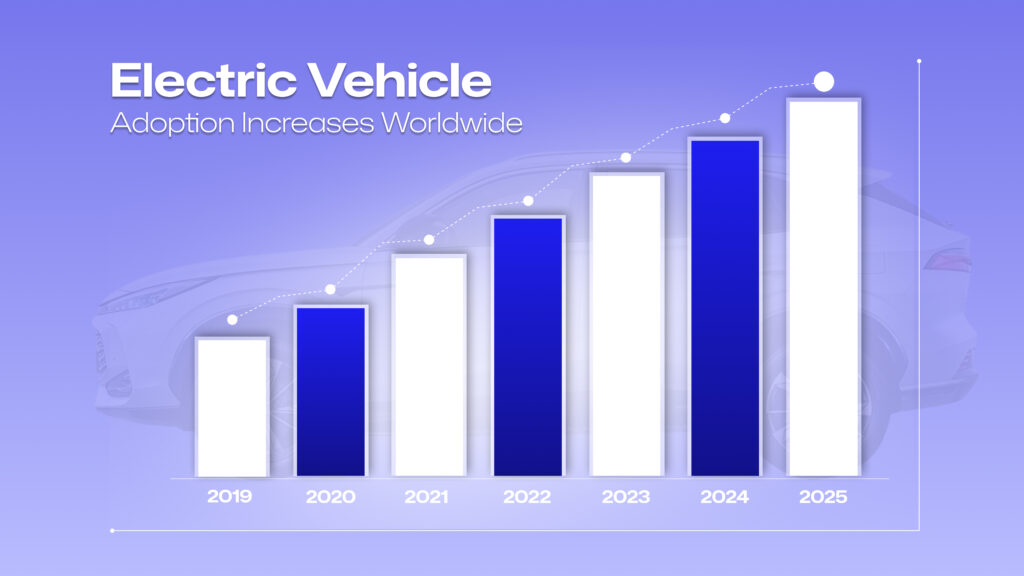
3. Competition is High
New entrants such as Tesla, Rivian, and Lucid are disrupting the industry. Legacy automakers now have to catch up in the electric vehicle market, which requires rapid development and huge spending.
4. Increasing Cost
Inflation and energy prices are pushing up the costs of manufacturing. These hikes ultimately hit customers, increasing prices and derailing sales of cars.
5. Less Consumer Demand
More individuals use ride-sharing or public transport these days, particularly in urban areas. This reduces the imperative to have a car, thereby deterring overall demand.
6. Digital Transformation Pressure
Customers now anticipate a seamless online experience. Brands that fail to provide smooth digital automotive advertising experiences risk being left behind.
7. Regulatory & Environmental Pressures
Governments are implementing more stringent regulations on emissions and fuel efficiency. Auto manufacturers must regularly revise technology and designs to remain compliant.
8. Proving ROI in Advertising
With shrinking media budgets, automakers are being asked to demonstrate genuine returns on their automobile advertising. Each dollar invested in marketing must perform better than ever before.
The Top Strategies for Auto Companies
The automobile industry is evolving rapidly, and auto companies must keep pace. It’s no longer about producing good cars, it’s about knowing customers better, leveraging intelligent technology, and providing people with precisely what they need.
One of the most significant activities is utilizing data to discover what consumers are seeking. It allows automotive marketing companies to present the appropriate advertisements to the appropriate viewers and improve purchasing experiences. With limited funds to allocate for promotion, companies need to ensure that every cent matters. That is why companies are increasingly employing AI tools to assist.
For example,
Spyne AI can recommend which ads will perform best, alter the message for every individual, and even monitor what’s working without requiring too much personal data. For instance, it can:
- Display various versions of an ad depending on the user.
- Acquire new customers even without tracking cookies.
- Utilize marketplace information to determine the ideal time to post a car ad.
- Engage in real-time conversations with customers to respond to questions and establish trust.
Other than marketing, automakers also need to concentrate on major changes such as electric vehicles, environmentally friendly practices, and intelligent features in cars. They have to invest in improved software, enhance online tools (such as virtual showrooms), and collaborate with technology partners to remain competitive.
Today’s customers desire quick, easy, and digital means to buy cars. Businesses that provide this experience and remain active in times of change will be the ones to expand in the future.
How Spyne Can Assist with Automotive Advertising
Spyne retail.ai brings automotive advertising quicker, smarter, and more impactful with the capabilities of AI and data. With improved vehicle imagery and wiser ad choices, Spyne allows car dealerships to achieve true results without taking up time and money.
1. Smarter Ads with Data
Spyne assists dealerships in creating better ad choices with the help of real-time data. It informs you what vehicles are most in demand, what your competitors are promoting, and where you should use your budget. That way, you connect with the right audience using the right message every day.
2. Websites Built for Dealers
Spyne assists you in creating quick, mobile-optimized websites that update your automotive inventory management in real-time. They’re also loaded with SEO features to assist your dealership in ranking higher on search results and draw more local buyers naturally.
3. Content That Connects
From videos to blogs, Spyne assists dealerships in producing content that customers want to read or view. This not only generates trust but also enhances your online presence and aids in converting leads into customers.
4. 24/7 Customer Chat
With AI automotive chatbots, your dealership can converse with customers even when you are not open. These bots respond to queries, schedule test drives, and offer instant assistance, improving the experience and enabling you to close more deals.
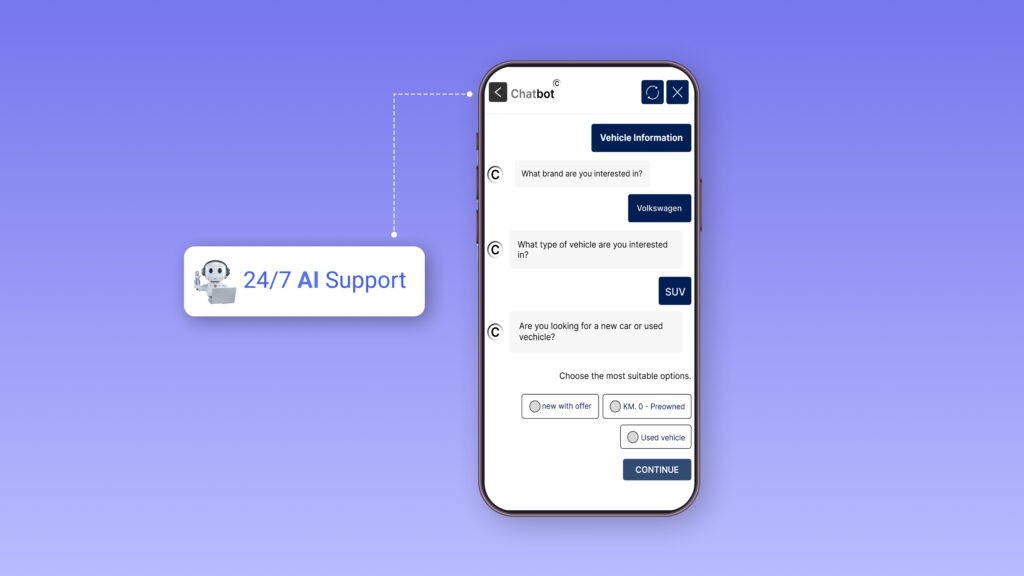
6. Suitable for Dealerships of Any Size
Spyne has served more than 500 dealerships globally and is scalable. If you are a small-town dealer or a large automotive group, Spyne can tailor its tools to suit your requirements and assist you in scaling up.
5. Improved ROI per Ad
Spyne, with the help of automotive marketing ROI, keeps you informed of which ads succeed and which don’t. You’ll see where your money’s going, what you’re bringing back, and how to increase performance. You’re always the boss of your ROI.
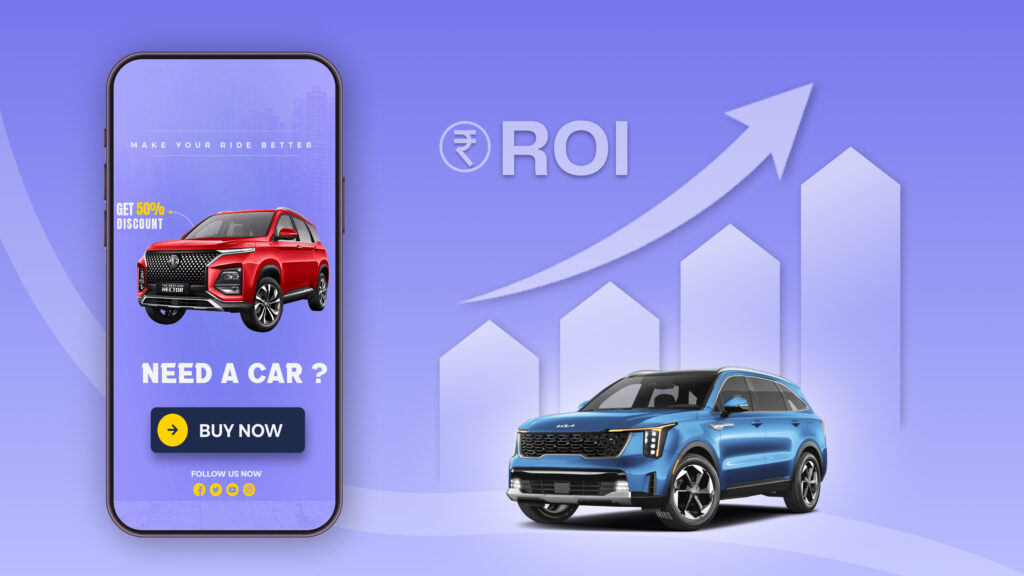
7. AI-Based Vehicle Images and Videos
First impressions always count, particularly online. Spyne’s AI solutions enable dealerships to produce high-quality car photos and 360° spin videos without the need for professional photographers. This makes listings appear better, load quicker, and attract more customers. The good news? It’s quick, cost-effective, and scalable.
Conclusion
Automotive advertising has grown more sophisticated and competitive, but dealerships can remain one step ahead if they have the right strategies and tools. Using AI and data-supported automotive marketing solutions such as Spyne, dealerships can develop effective, budget-friendly ads that reach the right customers and boost sales. Whether it’s through better vehicle imagery, wiser ad choices, or live customer support, Spyne assists dealerships in maximizing their marketing potential. Ready to experience it for your dealership? Schedule a free demo today and begin revolutionizing your automotive advertising!




